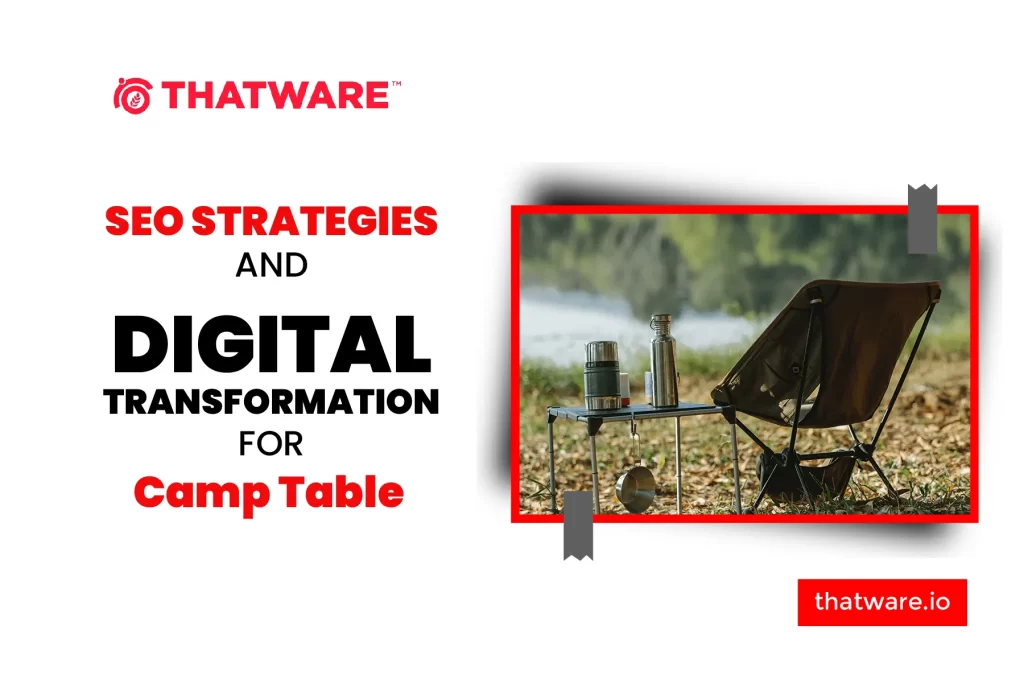Many camp owners are interested in learning how to improve their Google SEO. SEO, or search engine optimisation, is a set of technical practices that entails selecting strong keywords and ensuring that websites run smoothly to improve their ranking in search engines.
Techniques and Strategies for Camping Chairs and Tables
SEO professionals use the following SEO methods and tactics:
- Content is Crucial
- Keywords Have a Sweet Spot
- Go Wide
- Improve your site’s load time to deliver information faster
- Optimise For On-Page SEO
- Optimise For Search Intent
Let’s go over each step one by one:
Content is Crucial
Search engines monitor each page of your website for clues about categorising it. They examine relevant topics and how important they are to web searchers. Creating a large section of valuable, deliberate, and topic-relevant pages pays off.
Keywords Have a Spot
Optimise your search keywords for high search volume when creating valuable and interesting content for your website. Determine your target audience before focusing on the best keywords. There are numerous free keyword tools available online to assist you. The sweet spot is between 300 and 1,000 monthly searches.
Go Wide
To maximise SEO for your camp website, you must go beyond the website itself and ensure that your camp is listed in directories all over the internet. Links from other reputable websites are an important component of effective SEO. SEO helps you appear higher in search results and within multiple possible results. For the best results, do some online research to find directories and join as many as possible.
Improve Your Site’s Load Time to Deliver Information Faster
When performing SEO for camping furniture, you must ensure the user experience is positive. A fast-loading website that allows people to get information quickly is an important part of the user experience. Users expect your website to load in two seconds or less.
Use Google PageSpeed Insights to see your website’s current load time. This tool displays your current load time on desktop and mobile.
If your site’s a slow load time, you can make changes to make it faster. Some suggestions for enhancements include the following:
- lowering redirects
- Image file optimisation
- Activating browser caching
- Making use of a content distribution network
Optimise For On-Page SEO
This step is all about optimising your content for SEO by using keywords. On-page SEO encompasses far more than can be covered in a single post.
- Internal Accessibility
- Internal linking is still functional.
- But it would help if you did it correctly.
You want to link from high-authority web pages to pages that require more authority.
- Short, keyword-long URLs
Our analysis of 11.8 million Google search results revealed something that many people were surprised to learn: Short URLs outperform long URLs in search engine optimisation.
- Semantic SEO
When your content is optimised for Semantic SEO.
To put it another way:
- You look for words that are similar to your target keyword.
- Then you incorporate those terms into your content.
- Please enter your target keyword into Google Images to do it yourself.
To provide a positive user experience, make your website mobile-friendly.
Prospects will access your site from various devices if you do Camping SEO. People will learn about your campsite using various mobile phones and desktop computers. If your website is responsive to these devices, you can avoid losing users when they return to search results.
You must incorporate mobile-friendly web design to help you deliver a positive user experience.
Even though Google operates on a mobile-first index, mobile-friendly web design is critical to SEO. Because more people are accessing your website via tablets and smartphones, you must ensure that your website is optimised for those devices.
By implementing responsive design, you can provide an excellent mobile experience.
Integrate responsive design to make your website mobile-friendly. Responsive design allows your website to adapt to users’ screens regardless of their devices. You can include thumb-friendly buttons and a hamburger menu to make it easier for mobile users to navigate.
